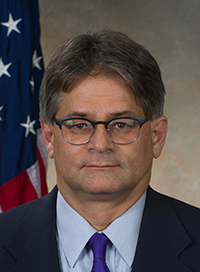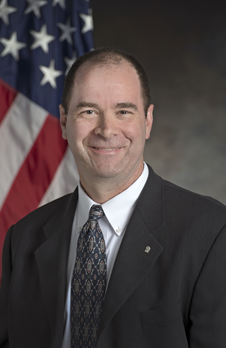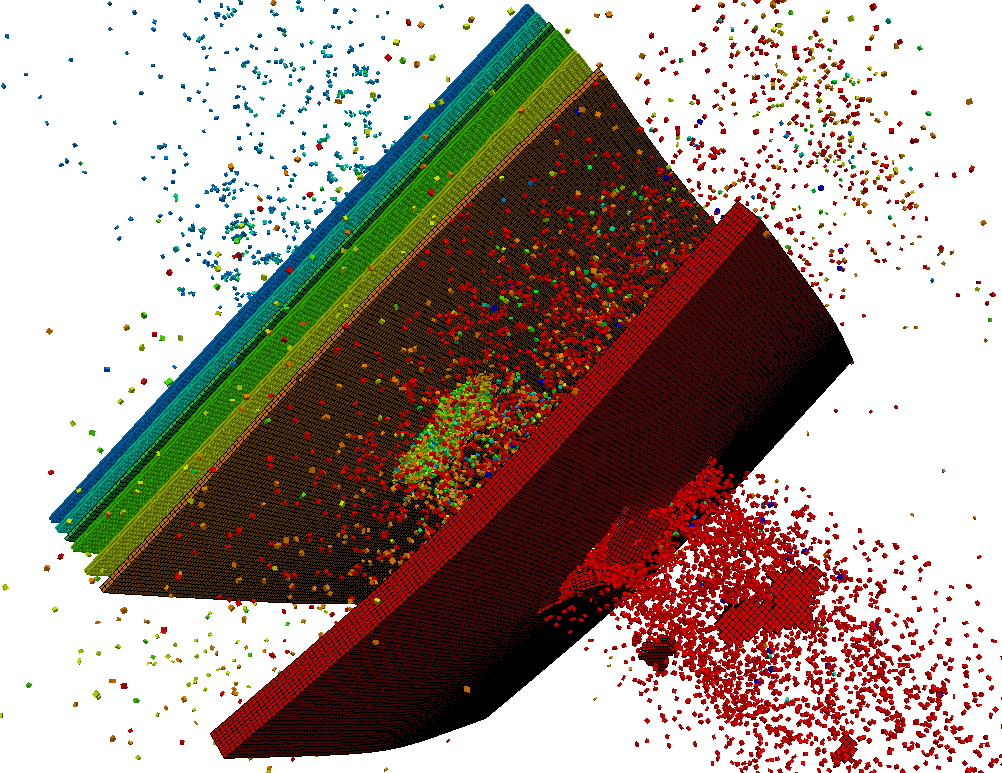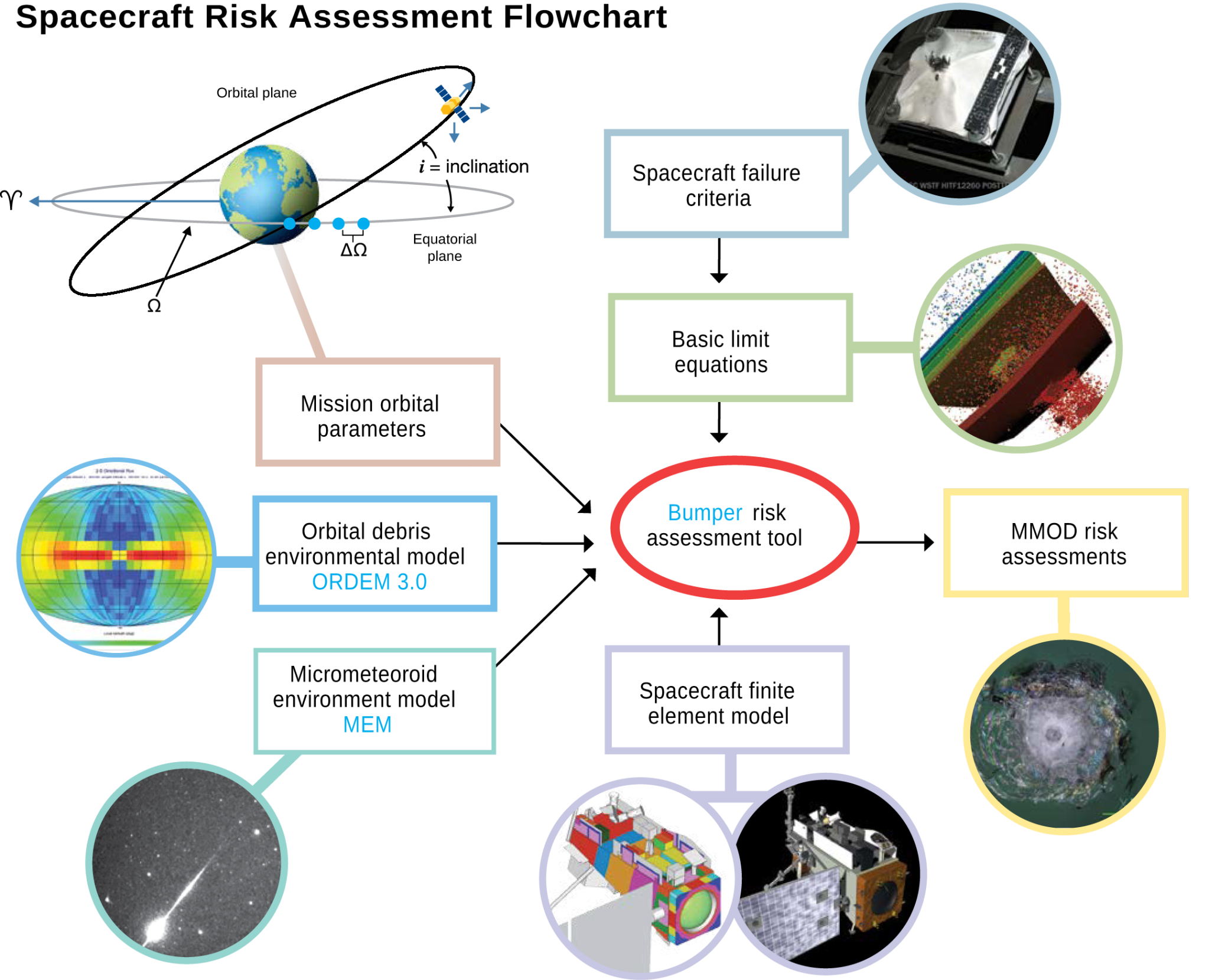This article is from the 2015 NESC Technical Update.
Getting to space requires speed. A lot of speed. So, for NASA to send an object, like a satellite, into orbit, that object must reach velocities of several kilometers per second. And if it hits anything while in orbit, like debris, the damage can be substantial if not catastrophic.
This is why NASA has invested much into investigating the potential risk of damage to its spaceflight programs from orbital debris—those manmade objects in Earth orbit that no longer serve a useful purpose, from a derelict satellite to a flake of paint. Natural objects like meteoroids are also a threat, traveling even faster than orbital debris. Typically comprising particles originating from comets or asteroids, the vast majority of them are very small micrometeoroids.
Micrometeoroids and orbital debris (MMOD) is the number one risk for NASA’s human spaceflight programs. Many orbital debris objects—approximately 20,000—are large enough to be tracked and catalogued by the U.S. Space Surveillance Network and can be avoided by spacecraft maneuvering. But it is the unseen population of MMOD that poses the biggest risk to spacecraft: the orbital debris large enough to cause damage, but too small to track, and the micrometeoroids, which cannot be tracked regardless of their size.
… it is the unseen population of MMOD that poses the biggest risk to spacecraft: the orbital debris large enough to cause damage, but too small to track
To help mitigate the risk of MMOD, NASA uses a variety of computer models and applications to perform MMOD risk assessments. The primary MMOD risk assessment tool is a computer application called Bumper. Bumper helps NASA determine the probability of a spacecraft being damaged by MMOD during its operational lifetime. Working with NASA’s primary MMOD organizations—the Orbital Debris Program Office, the Meteoroid Environment Office, and the Hypervelocity Impact Technology (HVIT) Office—the NESC has performed several assessments in pursuit of improving the understanding of MMOD risk, refining the risk assessment processes, and reducing the actual risk.
For example, in 2014, an NESC team compared NASA’s newest and most advanced orbital debris model, ORDEM 3.0, to other orbital debris models to analyze how it models the orbital debris population. ORDEM 3.0, key to predicting the orbital debris environment, uses the largest database of MMOD impact data taken from analyzing damage sites on the Space Shuttle after each return to Earth. As a result, there is a relatively high level of confidence in the results the model gives for the orbital altitude where the Shuttle flew. However, no sources of impact data are available for higher altitudes, so the model has to make certain assumptions on the sources of the debris, which results in more uncertainty in orbital debris predictions. The NESC review represented the most extensive independent review of ORDEM 3.0 since its release. The team concluded that ORDEM 3.0 is the best model available and appropriate for use in NASA’s MMOD risk assessments, while still making several recommendations that may reduce the uncertainties and improve the model.
MMOD environment model uncertainty affects the fidelity of predictions in MMOD risk assessments. But this is not the only source of uncertainty. Damage prediction is another area where uncertainties can be introduced into risk values. In order to predict the risk from MMOD, a clear understanding of the spacecraft’s susceptibility to MMOD is needed. This includes looking at each exposed component and how it will behave when hit by a hypervelocity particle. This is damage prediction. By combining hypervelocity impact testing with simulations, ballistic limit equations (BLEs) are produced, which define the minimum size of a particle that will cause a failure as a function of velocity. BLEs are generated for particles of different material densities (e.g., lighter aluminum will cause less damage than heavier steel) and impact angles. The NESC has worked with HVIT to conduct testing and simulations to refine existing BLEs and to create new ones for advanced shield materials and configurations. The NESC/HVIT Team also worked together to test and evaluate multifunctional shields that would protect from the radiation as well as the MMOD environment, and they evaluated self-sealing materials for use in pressurized volumes.
The NESC is also working to gauge how well NASA does on assessing MMOD risk overall. The concept is to compare MMOD-caused anomalies and failures on active satellites to what their predicted risk would be. This work is challenging as failure data are not always readily shared by satellite operators, and it is often difficult to pinpoint the cause of a failure as MMOD. On the other hand, few MMOD risk assessments have been performed on robotic satellites so predicted risk is, for the majority, unknown.
The MMOD risk assessment process is time and labor intensive and requires a detailed knowledge of the configuration, materials, and failure criteria for the spacecraft. To achieve a good statistical comparison, the NESC is targeting a limited number of satellites for which anomaly data and configuration information are available. The goal is to determine how close NASA is to accurately predicting this top-priority risk and to learn how to improve our risk predictions.
Orbital Debris Model ORDEM 3.0
ORDEM 3.0 is appropriate for those engineering solutions requiring knowledge and estimates of the orbital debris environment (debris spatial density, flux, etc.) and is primarily used by spacecraft designers to understand the long-term risks of debris collisions. ORDEM 3.0 can also be used as a benchmark for ground-based debris measurements and observations.
ORDEM 3.0 includes flux estimates for several material density classes. It has also been extended to describe the orbital debris environment from low Earth orbit past geosynchronous orbit (100 to 40,000 km altitude).
A large set of observational data (both in situ and ground-based) incorporated into ORDEM 3.0 reflects the current debris environment and is NASA’s best estimate of the current and near future orbital debris environment. These data cover the object size range from 10 µm to 1 m. Analytical techniques (such as maximum likelihood estimation and Bayesian statistics) are employed to determine the orbit populations used to calculate population fluxes and their uncertainties.
ORDEM 3.0 was developed by NASA’s Orbital Debris Program Office.
































